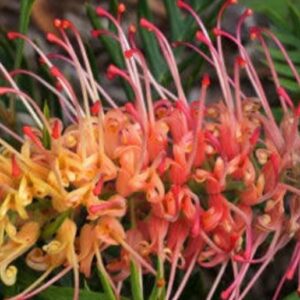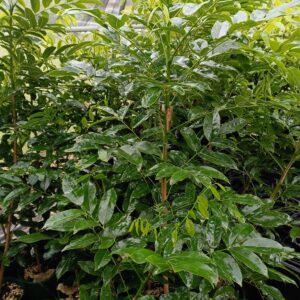The Benefits and Advantages of Spring Planting Native Trees and Shrubs After Winter Rain
Spring is an ideal time for planting native trees and shrubs, especially after the winter rains. The combination of warmer temperatures, moist soil, and longer daylight hours creates perfect conditions for young plants to establish themselves and thrive. Here are some key benefits and advantages of spring planting:
1. Moist Soil Conditions
Winter rain naturally hydrates the soil, creating an optimal environment for planting in spring. Moist soil helps young plants establish their root systems more easily. Unlike the drier conditions of summer, the moisture retained from winter rains means that newly planted trees and shrubs require less supplemental watering, reducing the risk of transplant shock.
2. Ideal Growing Conditions
Spring provides the ideal balance of temperature and daylight for plant growth. The cooler temperatures of early spring are gentle on young plants, allowing them to acclimate gradually to their new environment. As the season progresses, increasing daylight hours and warming temperatures encourage vigorous growth, helping plants establish strong roots before the heat of summer sets in.
3. Reduced Competition from Weeds
In many regions, weed growth slows during winter, and spring planting allows native trees and shrubs to get a head start before weeds begin to flourish. By planting in spring, your native plants have a better chance to establish themselves without having to compete heavily with fast-growing weeds. Mulching around your plants can further suppress weeds, keeping the soil moist and reducing competition.
4. Enhanced Root Development
Spring planting gives native trees and shrubs a full growing season to establish their root systems before the challenging conditions of summer. During this period, the roots can penetrate deeply into the soil, securing the plant and improving its ability to access water and nutrients. Well-established roots are crucial for the long-term health and resilience of native plants, particularly in regions prone to drought or extreme weather.
5. Encouraging Local Wildlife
Spring is also a time when local wildlife, such as birds, bees, and butterflies, becomes more active. By planting native trees and shrubs in spring, you can provide essential habitats and food sources for these beneficial creatures. Native plants are particularly important for local wildlife as they have evolved together, making them a natural and essential part of the ecosystem.
6. Supporting Sustainable Gardening
Spring planting aligns with sustainable gardening practices. By taking advantage of the natural moisture from winter rains, you can minimize the need for artificial irrigation, conserving water and reducing your environmental footprint. Native plants are also adapted to the local climate and soil conditions, which means they typically require fewer resources, such as fertilizers and pesticides, compared to non-native species.
7. Long-Term Garden Success
Planting in spring sets the stage for long-term success in your garden. Native trees and shrubs planted in spring have the entire growing season to acclimate, grow, and build strength before facing the challenges of summer and beyond. This head start increases the likelihood that your plants will thrive, contributing to a healthy, resilient garden for years to come.
Conclusion
Spring planting of native trees and shrubs after winter rain offers numerous benefits, from improved soil moisture and ideal growing conditions to enhanced root development and support for local wildlife. By planting in spring, you can take full advantage of the natural rhythms of the seasons, ensuring that your native plants have the best possible start. This approach not only promotes a healthy and sustainable garden but also contributes to the overall health of the environment, making it a wise choice for gardeners and nature enthusiasts alike.




